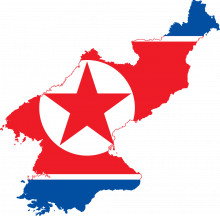Several weeks ago, I posted a blog that talked about our new national security paradigm, focused specifically on the “4+1 construct,” revealed by then Secretary of Defense Ashton Carter at the Reagan National Defense Forum in November 2015. This new way of looking at threats to our nation focuses on “four contingencies and one condition.” North Korea is one of those contingencies.
As Adam Johnson noted in the Reader’s Guide for his Pulitzer Prize-winning novel, The Orphan Master’s Son, “It is illegal for a citizen of the DPRK [Democratic People’s Republic of Korea] to interact with a foreigner.” In a nutshell, this helps understand why North Korea is the most isolated nation in the world and why that nation’s decision-making is often completely unfathomable. THAT is what makes North Korea so dangerous.
Juxtapose this against the widely-heralded United States “Rebalance to the Asia-Pacific Region,” and you have the compelling ingredients for conflict—you don’t have to manufacture them. What North Korea does will continue to bedevil the United States—and the West for that matter—for the foreseeable future. The Hermit Kingdom remains the world’s most mysterious place. As a Center for Naval Analyses Study noted, “The Kim-Jong-un regime has not completely revealed itself to the outside world.” Not to put too fine a point on it, North Korea would likely qualify as one of former Secretary of Defense Donald Rumsfeld’s, “Unknown unknowns, the ones we don’t know we don’t know.”
First, there are longstanding issues between the West, and especially the United States and North Korea. Among the most prominent:
- Long-term enmity toward the United States (Korean War)
- Favorable geographic position vis-à-vis South Korea
- Leadership intentions have always been opaque
- Economy can’t provide for population’s basic needs
- Most closed society on the planet
But in addition to these long-standing issues, since the fall of 2015, North Korea is behaving in ways that worry the United States. Among the biggest issues:
- A young leader still consolidating power
- Developing enhanced ballistic missile capability
- Sustaining an active WMD program – and exporting WMD
- Increasing rhetoric against the West and especially the U.S.
- Numerous new ballistic missile tests
- Engine tests for proposed ICBM that can reach the United States
These are worrisome signs. Stay tuned to this blog over the next several weeks to learn more about other threats to our national security.


